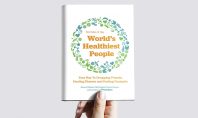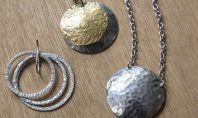Rebuilding after Breast Cancer
In 2010, Laurie Holland’s world exploded. She was diagnosed with breast cancer. With treatment, she beat it; but after gathering her life and her strength back together, cancer simply blew it up again in 2015 with a second diagnosis.
“I was diagnosed very early, which is critical,” says Laurie, who lives in Scranton and works for Sanofi-Pasteur. But still, Laurie learned she needed to have one breast removed. Faced with the decision of whether or not to have a bilateral mastectomy, she chose to have both breasts removed to reduce her risk of a future cancer recurrence.
With that, the big decisions were far from over. Laurie then had to decide whether or not to have breast reconstructive surgery. Considering that any type of surgery can be stressful, and knowing that the reconstruction would only add more time and procedures to an already long cancer journey, Laurie felt daunted and scared—but she eventually came to a conclusion that would help her move forward: “I wanted to preserve my body shape, so I decided to go for it,” Laurie says, explaining that she chose to have a flap procedure (more on that later).
And Laurie is in good company—a 2017 report from the Agency for Healthcare Research and Quality (AHRQ) found that breast reconstruction after mastectomy rose a whopping 62 percent from 2009 to 2014. And thankfully, reconstruction is nearly always covered by insurance. The Women’s Health and Cancer Rights Act of 1998 requires all group health plans that pay for mastectomy to also cover prostheses and reconstructive procedures. Additionally, Medicare covers breast reconstruction, while Medicaid coverage can vary from state to state.
“There is no one best reconstruction method. Each procedure has pros and cons.”
“Research has clearly shown that breast reconstruction helps these patients feel more comfortable about how they look after a mastectomy,” says Juan Carlos Martinez, MD, a plastic and reconstructive surgeon with St. Luke’s Plastic & Reconstructive Surgery.
But after a breast cancer survivor makes the choice to do reconstruction, she is faced with yet another choice: which type of procedure to have.
Women who undergo a mastectomy have several options,” Dr. Martinez says. A woman can get implants, filled with saline or silicone; or she can opt for a “flap procedure,” like Laurie did, which takes a section of tissue from one area of her body (most often the abdomen) and relocates it to create a new breast mound. She can also do a combination of these procedures, which is called a “hybrid,” by using her own natural tissue with an implant. “There is no one best reconstruction method,” Dr. Martinez says. “Each procedure has pros and cons.”
“Timing of the surgery, expected outcome, and recovery time all vary for the different procedures,” says Dr. Martinez. “That’s why it’s important to talk about all of this with your surgeon during an initial consultation.”
For example, a flap procedure is more complicated and has a longer recovery time, but isn’t likely to cause any problems later on; while implants are initially easier, but are more likely to require additional procedures to maintain them. That’s why, once a woman decides to have reconstruction, she’ll meet with a St. Luke’s plastic surgeon—and ideally, bring along a close family member or friend—to discuss her lifestyle and goals, and settle on the best plan of action.
Need another reason to bring a supportive family member or friend? “I believe that having a strong family support while you are going through this emotional process is very important,” says Dr. Martinez. “Joining a local support community or organization can be helpful, too, allowing you to connect with people who are going through the same thing.”
One thing many women considering breast reconstruction might not know is that it can often take more than one procedure. “Understand that breast reconstruction is a journey,” says Dr. Martinez. “It might require multiple steps to get to a desired goal.”
Today, Laurie is nearing the end of her reconstructive procedures, and she feels that the journey was well worth it and has helped her regain a sense of her pre-cancer identity. “I’m looking forward to being finished with my reconstruction,” Laurie says, happily.
For more information on breast reconstruction surgery, visit: slhn.org/plastics
Breast Cancer Screenings 101
Experts recommend two key practices for early detection of breast cancer: self-checks and mammograms. Here’s what you need to know about both.
Self-checks: Women should perform regular self-breast exams. For instructions on how to perform a self-exam, visit nationalbreastcancer.org/breast-self-exam. If you find a lump or dimple, or notice nipple discharge, it’s important to see your doctor ASAP.
Mammograms: These were first recommended by the American Cancer Society (ACS) for detection of breast cancer in 1976, and they’re still the standard. The ACS says that women should have their first screening mammogram by age 45, and that they should have the choice to start screening as early as age 40. Bonus: Mammograms are better and safer than ever—especially if you go to a facility with modern equipment and experts specifically trained in breast health. St. Luke’s offers 3D screening mammograms at Women’s Breast Imaging Centers throughout the Greater Lehigh Valley—with the lowest dose radiation possible.




















